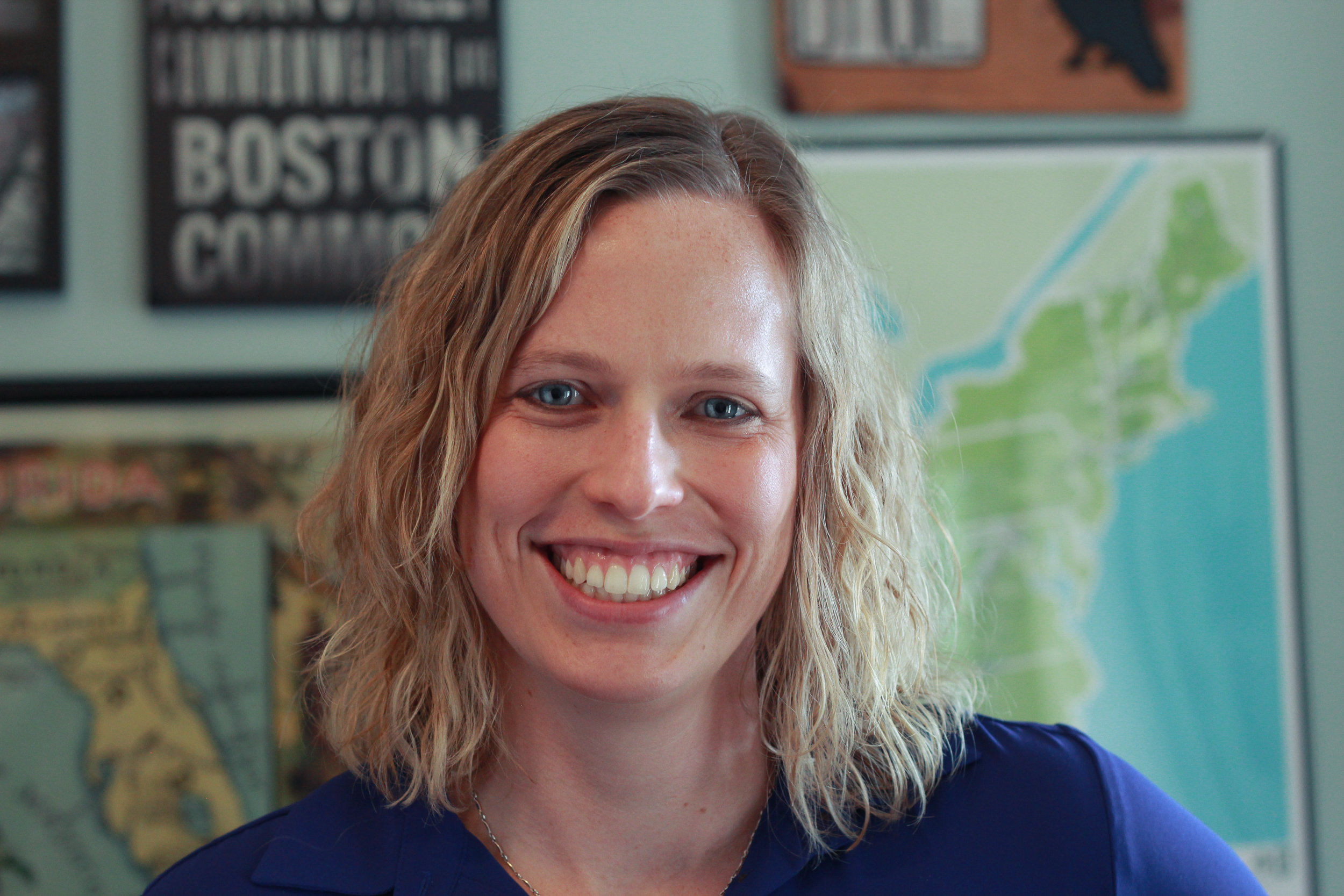AOTA member spotlight: Caitlin Synovec, OTD, OTR/L, BCMH
Caitlin Synovec, OTD, OTR/L, BCMH, is Program Manager—National Institute for Medical Respite Care at National Health Care for the Homeless Council and Former Occupational Therapist at Health Care for the Homeless. She met with AOTA Director of Quality, Julie Malloy, MOT, OTR/L, PMP, CPHQ, to discuss her career path.

Julie: How did you get started working with individuals experiencing homelessness?
Caitlin: I was working at Johns Hopkins in the inpatient psychiatric unit, and I had started doing more outpatient care. This was around the time of the Affordable Care Act and the expansion of state Medicaid programs. More people had access to care for outpatient mental health occupational therapy. A good friend of mine who is a social worker started working for an agency called Healthcare for the Homeless (HCH). He knew his clients could benefit from occupational therapy from our work together in the hospital.
Julie: How did you go about getting occupational therapy started in the program?
Caitlin: There were many barriers, but the hardest part was the logistics of how to get people referred to this program where OT services were being provided. We really wanted to be accessible for clients. Many could not make it back to the hospital-based clinics for care. So I would do what I could to help them make it to their appointments, such as meeting them at the entrance of the hospital. I also offered to come to the Healthcare for the Homeless site, and I volunteered my occupational therapy services 3 to 4 hours a week. I completed evaluations, performed functional and cognitive assessments, and provided recommendations about what each client needed to be successful. Many times this included permanent supportive housing. My supervisor at Johns Hopkins was flexible, and that allowed me to modify my work hours to accommodate being onsite at HCH to provide this service.
Julie: How were you able to transition your volunteer work into a paid position?
Caitlin: I spent time connecting with the directors at Healthcare for the Homeless so they understood the role of occupational therapy. I spent a year volunteering, all while collecting data about the value of the OT program. I then spoke with the director of supportive housing to discuss options for expanding services. They really saw the value of the service, and we worked to transition the volunteer work into a paid full-time position. At that point, I was able to grow and expand services into treatment as well as a medical respite program. After another year at the program, I had a waiting list for occupational therapy services, so we opened up another position for an occupational therapist.
Julie: What were some of the complexities you needed to think through to make this type of program work?
Caitlin: There are a lot of moving pieces to a program like this. First, we needed to patch together a space for therapy. HCH is a primary health care clinic so there was not an immediate “functional” space. Being part of a nonprofit, we also needed to work within that system and be cognizant of costs. I worked on several quality improvement projects while there, to make sure we were operating as efficiently as possible. There were also difficulties with getting payment from Medicaid. It is so important to keep advocating for policy change for these types of services at both the local and national levels.
Julie: How did you then become involved with the Healthcare for the Homeless Council?
Caitlin: I loved working where I was, but my family was moving to another location. I had done work for the Healthcare for the Homeless Council as a subject matter expert, as part of the task force to develop adapted clinical guidelines for individuals with traumatic brain injury. I applied for the Program Manager position when it opened, and I got the job! Now I work with the National Institute for Medical Respite Care, which is an initiative for the National Health Care for the Homeless Council. Medical respite programs are expanding, and we want to make sure they are high quality and built on the values of the Council. I really love getting to work on population-level initiatives related to occupational therapy. I continue to see critical places where occupational therapy can provide care and improve the health of populations.
Julie: What advice would you give to those interested in working with people experiencing homelessness?
Caitlin: I recommend that people work on building relationships with community organizations. The first person you talk to at a program you are interested in working with might not be the right person. For me, it took about 7 to 8 months to find the right spot in the organization. It takes time and hard work. I know I had the privilege to be able to do that. You may need to think about how to negotiate, think outside the box, and make a case for how occupational therapy fits with and enhances what they are already doing.
Dr. Synovec has also participated in a StoryCorp interview. Listen to her interview.
For questions or comments, or if you have a story about occupational therapy innovation and quality, please contact quality@aota.org.